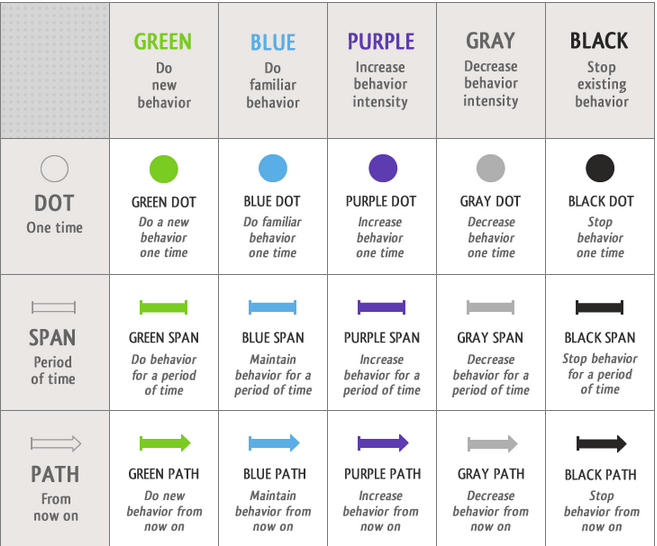The behaviour grid: the key to making habits stick
There is a lot of advice out there about how to start flossing, exercising, eating healthy, etc. Making habits stick is hard, and we all need a little guidance. But what most advice pieces lose sight of is that there are different types of habits.
This is where Stanford professor BJ Fogg's behavioural model comes in. Fogg and his team focus on methods for creating habits, causes of behaviour, and behaviour change automation. He teaches Stanford students how to create tech systems that change behaviour. Ever heard of a little app called Instagram? It has influenced the behaviour of more than 150 million monthly users. And one of its co-founders, Mike Krieger, was Fogg's student at Stanford.
So Fogg's methodology is definitely on to something here: it's proven that it actually does affect behaviour. But let's see how it can be applied to picking up a new habit.
Identify what kind of habit you want to implement
When you do decide to change a habit, you should ask yourself these two questions first:
1. Am I starting a new behaviour, restarting a familiar behaviour or increasing an existing behaviour?
2. Is this behaviour going to happen one time only (plant a tree), for a certain period of time (a month-long daily yoga challenge), or always from now on (floss every night before going to sleep)?
Because habits are by definition repetitive, they fall under starting, restarting or increasing a behaviour for a period of time or from now on.
Fogg's behaviour grid maps 15 kinds of behaviour change. It contains three rows: dot behaviour, happening only one time; span behaviour, lasting for a certain duration of time; and path behaviour, which is a permanent change.
We can see that when it comes to creating new habits there are six possibilities: green span, blue span, purple span, green path, blue path and purple path.
 Photo courtesy of the Behaviour Wizard http://www.behaviorwizard.org/wp/
Photo courtesy of the Behaviour Wizard http://www.behaviorwizard.org/wp/
The key elements
According to Fogg, for a behaviour to happen, a combination of these three key elements must be present:
- Motivation must be present when the trigger occurs in order for the behaviour to be carried out. If motivation is high, then the person engaging in the behaviour might be willing to do so even when the behaviour is difficult.
- Ability implies that a person must have the ability to perform a certain behaviour, including knowing how to perform the behaviour. This sometimes implies simplifying a behaviour in order to make it stick.
- Triggers are the prompts that tell us to perform a certain behaviour in a particular instant. Triggers can range from a specific time of the day to a specific situation or an internal signal from our body.
However, depending on where the behaviour falls on the behaviour grid, it requires each key element to a different degree. Each one of the behaviours involved in habit formation is characterized by a different balance of these three elements.
Let's say you want to pick up a new behaviour from now on, for example you want to keep a daily gratefulness journal. For this to happen, you need to boost your motivation (if it's necessary - you might already be pumped up for the new behaviour) and enhance your ability by making it simple to commit to the action. The cue that tells you to write down your grateful thoughts must then happen when both your motivation and your ability to do the action are in optimal states.
But let's say that you're trying to increase a behaviour from now on. For example, you want to jog for 10 minutes more each day or save 5% more of your income from now on. To increase the behaviour, you also need to increase the number of triggers leading to that desirable behaviour and amplify the motivation through both intrinsic and extrinsic motivators. It will be much easier to save an extra 5% if you are motivated by a vacation at the end of the year (motivation). It will also be easier to stop spending money on unnecessary purchases by placing a picture of your destination in your wallet to see every time you open it (trigger).
Effective triggers: taking baby steps
Effective triggers prompt you to do something that is both easy and you're motivated to do. A trigger that initiates a difficult action can be frustrating, and one that nudges you to do something that you're not motivated to is simply annoying.
With human nature being what it is, it's often a lot easier to make a task easier than boost motivation. That's why many times the key to habit formation is simply taking baby steps. Make it easier to do something that you already want to do but find it too hard or are not motivated enough.
As Leo Babauta says, "Make it so easy you can't say no."
You might want to start exercising regularly, but that habit won't solidify if you do one hour of cardio each day for a week and then stop. Instead, you can start by doing two minutes of cardio. Two minutes is not a big commitment. It's so easy you can't refuse yourself.
Of course, the point is to build up to your goal. But in the beginning, what matters more is that your behaviour becomes consistent. When you have consistency, then you can build on top of that behaviour and give it more dimensions.
What habits are you trying to pick up? We'd love it if you shared your journey with us in the comment section below.